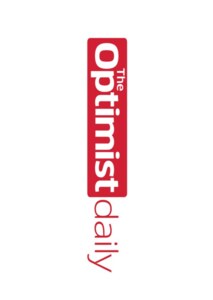“Life, in its autopoietic, self-creating and self-maintaining evolution dances between chaos and perfect order without ever losing itself in chaos or getting stuck in rigid order.”
By Elisabet Sahtouris
Précis
Humanity, like all other species of Earth before and with us, is evolving—and evolution, for humans as for all species, is neither predictably linear nor solely Darwinian. Earth’s nearly four billion years of evolutionary experience reveals reliable patterns that give us hope, inspiration and valuable guidance for getting ourselves through the unprecedented confluence of enormous crises in which we humans quite suddenly find ourselves. Here we see the evolutionary Big Picture, including the amazingly complex lives of our remotest bacterial ancestors, who had Earth to themselves for fully half of evolution, and much of whose experience we seem to be mirroring now. They engaged in hostilities, generated global crises of hunger and pollution as great as ours today, and solved them without benefit of brain! Along the way they invented electric motors, atomic piles and the first World Wide Web of DNA exchange; then, in the greatest of all evolutionary ventures, formed cooperatives that became nucleated cells. These cooperatives were the basis for the evolution of our own hundred-trillion-celled human bodies, which role model amazingly sustainable economies. Learning from newly revealed problems and solutions in biological evolution, we too are finding out how to survive and even thrive into a better future despite —perhaps because of— our greatest challenges. That would indeed be cause for celebration.
__________________________________
Why the Celebration?
We have reason to celebrate at least three major crises— in energy, economy, and climate — that may yet save us. Confronting us simultaneously and globally, they add up to the greatest challenge in all human history. That challenge itself is cause for celebration. Why? Because nothing short of a fundamental review, revisioning and revising of our entire way of life on planet Earth is required to face these three interrelated challenges successfully. They tell us we cannot go on doing what we are doing, that we must change our way of life, and so make this an amazing time of opportunity to create the world we all deeply want.
Is this an idle dream, an airy-fairy ‘create your own reality’ pitch? Guess what?
We humans created the reality we have now. It was not imposed on us by fate or any other outside agency. While some may still claim we had nothing to do with global warming, few would deny we have ravaged our planet’s ecosystems and loaded our air with pollutants. How many would claim we had no choice in how to produce our energy, or insist that Mother Nature inflicted our money system on us? We humans dreamed up and then realized our economic systems, including our technological path via the exploitation of nature and our focus on consumerism to keep ever-expanding production profitable.
Some human systems were created such that they remained sustainable over thousands of years, while our currently dominant one has proven unsustainable in only a few hundred years. The recognition that our current way of life is unsustainable is a new and vital insight, without which we could not see any need to change the way we live on our astonishingly provident planet, now ravaged to a critical point.
So I celebrate our recognition of our unsustainability together with the enormous creativity of our species, which has already proven itself resourceful again and again in its relatively brief evolutionary/ historic trajectory. In that regard, we follow in the footsteps of many a biological ancestor species, as we will see, and as I hope, will give us inspiration and guidance on the road ahead of us.

Economic Basics
What is an economy? I will venture to define the essence of an economy as the relationships involved in the acquisition of raw materials, their transformation into useful products, their distribution and use or consumption, and the disposal and/or recycling of what is not consumed. This definition — and this is very important to understand — is as applicable to our human economies as to nature’s ecosystemic economies, as well as to the astonishingly complex economies operating within our own bodies.
Earth has four billion years of experience in economics and may well have something to teach us. Just for starters, nature recycles everything not consumed, which is why it has managed to create endless diversity and resilience, with ever greater complexity, using virtually the same set of finite raw materials for all that time. Furthermore, with us or without us, she is likely to continue doing so for as long as our benevolent sun shines upon her, despite — or perhaps because — she suffers periodic crises that drive her creativity.
Let’s look at how Earth faces these crises. But before we do, let me point out that Earth’s economy is a truly global economy, composed of many and diverse interconnected local ecosystemic economies woven together by global systems of air, water, climate/weather, tectonics, migrations and — not least important — a single biological gene pool. While most of the history of biology and biological evolution has been about ‘rabbits in habitats,’ we are finally coming to understand ‘rhabitats’ — the holistic economies of nature embedded within each other all the way up to its global economy.
Crisis as Opportunity in Nature
We are facing an onrushing Hot Age. Around fifty-five million years ago, Earth had its last Hot Age. In between, since the advent of humanity, our species faced and survived at least a dozen Ice Ages. Only since the last Ice Age has there been the long (from a human perspective) benign, stable climate in which known human civilizations evolved. It was possible because the last Hot Age plus an Earth-rocking meteor, extinguished the massive reptiles and kicked off a creative wave of mammalian evolution. Crisis for some was opportunity for others in nature’s resourceful ways.
In the much older 520-million-year-old Cambrian era Burgess Shale, found between two peaks in the Canadian Rockies near Banff, Canada, lies fossil testimony to one of the greatest ‘opportunity’ responses to crisis in all Earth’s history. Interesting that it, too, happened during a time of warm seas and no polar ice — such as we ourselves may be facing — occurring relatively shortly after a ‘snowball Earth’ climate.

In this Cambrian period before land plants and animals appeared, marine invertebrate life reached a fully modern range of basic anatomical variety that more than 500 million years of subsequent evolution has not enlarged. The fossil record of this ‘Cambrian Explosion’ shows a radiation of animals to fill in vacant niches, left empty as an extinction had cleared out the pre-existing fauna. Once again, crisis for some; opportunity for others.
Let’s continue deeper yet into the past. By the Cambrian era, Earthlife had already been through well over half its evolutionary trajectory in years. In fact, for the first half of Earth’s biological evolution — for roughly two billion years — archaebacteria, now called simply archaea, had the whole world to themselves. They evolved amazing lifestyle diversity in their massive proliferation from the depths of the oceans to the highest mountain peaks and even the highest life ever reached in the air, dramatically changing whole landscapes and shallow seafloors as well as the chemical composition of the atmosphere.
Their impact is yet to be truly understood outside the halls of science, although they pioneered economic situations and technologies such as harnessing solar energy, building electric motors and developing the first World Wide Web of information exchange we claim as human firsts, as I will describe. My point here is that the archaea, at the beginning of Earthlife’s evolution, were first to make extraordinary responses to global crises — crises of their own making, we should note, unlike the later great extinctions.
The first major such response was to a global food shortage that occurred because the archaea, after spreading all over Earth, were eating up all the free food — the sugars and acids chemically produced via solar UV radiation. Their amazing response was to draw on their own gene pool to change their metabolic pathways such that they could harness solar energy to produce food in the process well known to us as photosynthesis. According to Daniel Nocera at M.I.T., if we could do it at a human scale—and why shouldn’t we if bacteria did it at theirs?—it could fill all our energy needs as long as Earth and we ourselves live.
Before photosynthesis, the archaea had to dwell in seawater or underground, away from burning sunlight. To function in sunlight, the new photosynthesizers were driven to invent enzymes functioning as sunscreens to protect themselves as they lived off the sun’s rays and the plentiful minerals and water available to them. Unfortunately, while they did extremely well, they inadvertently created the next big global crisis of atmospheric pollution, leading to the next notable example of taking crisis as opportunity.
Like today’s plants that inherited their lifestyle, the photosynthesizing archaea gave off oxygen as their waste gas. There were, as yet, no oxygen-needy creatures, so the highly corrosive oxygen, after as much of it as possible was absorbed by seas and rocks and soil reddened by its rusting effects, piled up in the atmosphere in highly significant and dangerous quantities. Along with its direct dangers of killing corrosion, this pollution created the ozone layer which caused further diminution of the old sugar and acid food supply requiring the free passage of UV through the atmosphere.
Once again, life responded with a stunning new lifestyle invention — a whole new way of living using oxygen itself to smash food molecules in the most hi-tech biological lifestyle thus far invented — the one we ourselves inherited from them and call ‘breathing’. Archaea that breathed in oxygen gave off the carbon dioxide needed by the photosynthesizers, thereby completing a give and take exchange in which their plant and animal heirs, including us, still engage.
Life has a dynamic way of oscillating between problems and solutions, which seems to keep evolution happening. The ‘breathers’ needed food molecules to smash while food was becoming scarcer. Solution: they invented electric motors built into their cell membranes, vastly more efficient than human-designed motors up to the present, attaching flagella to them as propellers. These hi-tech breathers drilled their way into big sluggish fermenting archaea, which I have called ‘bubblers’ (Sahtouris 2000). This initiated the era of bacterial colonialism in which the breathers invaded the bubblers for their ‘raw material’ molecules. Reproducing by division within the bubblers, they literally occupied them as they exploited and drained away their resources, leaving them weakened or dead.
In this primeval Earth world, we can imagine the many conflicts over scarce food and overcrowding that wreaked havoc, yet simultaneously drove innovation. Eventually, in their encounters with each other, archaea somehow discovered the advantages of cooperation over competition: that feeding your enemy is more energy efficient (read: less costly) than killing them off. Take note, as this is the essential step in species maturation from competition to cooperation throughout the rest of evolution right up to our own in the present.
All along, in evolving different lifestyles, the archaea had freely traded DNA genes with each other across all the different types in a great World Wide Web of information exchange giving any bacterium—to this day—access to the DNA information of any other with which it came or comes into contact. It may even be the case that they devised the DNA packets we call viruses as a way of sending genetic information across space and time. Thus they refined a myriad particular body shapes and lifestyles or roles, such as fixing nitrogen or moving by whiplash propulsion or living in mats of millions.
The crowning glory of all their achievements was the evolution of gigantic collectives with highly sophisticated divisions of labour that became the only other type of cell ever to grace the evolutionary scene: the nucleated cells of which we ourselves are composed. This may have begun, as microbiologist Lynn Margulis and others worked it out, when invading breathers felt their bubbler hosts weakening and took on some ‘bluegreens’ (photosynthesizers) to make food for the entire colony. The breathers’ motors provided transportation by working in unison on the bubblers’ cell membrane to drive the colony into sunlight where the bluegreens could work as needed (Margulis 1998).
In such cooperatives, apparently each specialized archaeon donated the DNA it did not need to fulfill its special function into a common gene library that became the new cell’s nucleus. To this day our cells and those of plants, animals and fungi, contain the descendants of these archaea in the form of mitochondria (breathers) and chloroplasts (bluegreens), and our gut bacteria include descendants of bubbler fermentor archaea as well.
Species that become sustainable — that survive a really long time — get to their mature collaborative phase while others, stuck in youthful behaviors that no longer serve them, die out.
Nucleated cells went through another billion years repeating the cycle of youthful competition and creativity to mature cooperation in the form of multi-celled creatures — the last great leap in evolution — around one billion years ago, bringing us closer to that Cambrian era when this evolutionary model really took off as described earlier.
The Brink of Maturity
If indeed the universe evolves within a source field of consciousness as I, among increasingly many other scientists, have come to believe, then the most likely single operating principle of such a self-organizing living universe is: anything that can happen will happen. In such a wide-open creative universe, what is of greatest interest to me is what is sustainable — what lasts — especially under disruptive conditions. Taking this as a thought experiment, I concluded that the sustainability of any entity depends on its coming into harmony with whatever surrounds it in a mutual give and take that makes it more or less indispensable to the whole in which it is embedded.
Thus it has become clear to me that the very essence of Earth’s biological evolution lies in the repeating cycles of maturation from competition to cooperation I have so often described: the mature cooperative phases often driven into existence by crises, most dramatically in global extinctions.
Consider how the majority of humans tend to become highly cooperative in times of disaster, surviving predations of the few to create wellbeing for the many. Interesting to note here that in Japan’s Fukushima disaster the cooperation was 100%. So much for the socio-economic Darwinian model of greed as our inescapable human nature.
Species that become sustainable — that survive a really long time — get to their mature collaborative phase while others, stuck in youthful behaviors that no longer serve them, die out. Humanity now stands on the brink of such maturity in the midst of disasters of our own making. Let us take heart from our most ancient Earth ancestors, the archaea — the only other creatures of Earth to create global disasters through their own behavior and solve them — to see if we can do as well as they did. Let a mature and cooperative global economy be our goal and let us make it as successful, as efficient and resilient, as our own nucleated cells.
According to ecologists, in Type I ‘pioneer’ ecosystems, species duke it out in hostile competition for territory and resources. Type III ‘climax’ ecosystems, such as old coral reefs and old-growth forests or prairies, on the contrary, are composed of a rich assortment of species each of which cooperatively contributes something valuable to the whole as it consumes its fair share of resources in the efficient energy exchange of the whole system. Mature cooperative efficiency, however, is not enough to make a species or an ecosystem sustainable. Energy efficiency must be balanced by elasticity — by resilience to disturbances from within or from without. Ecologists long concerned only with the efficiency now begin to recognize this vital balancing act (see Korhonen and Seager 2008).
Ecologists almost universally assume that Type I and Type III ecosystems are composed of different types of species in an almost mechanical replacement process, with Type II’s being a mix of I’s and III’s. Because their basic assumptions about nature include that evolution only happens via genetic accidents and selective adaptation, they cannot entertain notions of intelligent systemic learning or even maturation in nature, however obvious it may appear. To me this is like aliens studying humans on a short visit, noting the smallest crawling on all fours, the mid-sized running and playing, the more sedate tall ones going about their business and the stooped white-haired as four different species.
Eshel Ben Jacob, a scientist studying bacterial colonies responding to stress in his Tel Aviv University laboratory for many years now, concluded that bacterial colonies function like group minds able to respond intelligently to stress. Before he reached this conclusion, he tried every possible explanation in terms of mindless chemical signaling, ‘machine intelligence,’ etc., finding them inadequate to describe the creative problem-solving of his bacterial colonies. Eventually, he began using the terminology of social networking and was invited to present their intelligent behavior at Google headquarters! If even bacteria can demonstrate such intelligent creativity and learning, surely later species evolved from them should as well.
Nature, on the whole, does not fix what isn’t broken. It is profoundly conservative when things are working well, and radically creative when they don’t. Recall that in Arnold Toynbee’s classic study of civilizations that failed, the two critical factors proved to be the extreme concentration of wealth and the failure to change when a change was called for (Toynbee 1946). More recent studies, such as Jared Diamond’s Collapse, spell out more detail in the very issues we have identified as current crises, such as resource depletion, climate change, population explosion, globalization, and bad political choices, all of which can be subsumed under Toynbee’s refusal to change when things become unsustainable. We could also call that lack of resilience or failure to mature!
Resilience permits positive responses to crises, trying out all possible solutions to see what works. Thus I prefer the metaphor of improvisational dance for evolution. Life, in its autopoietic, self-creating and self-maintaining evolution dances between chaos and perfect order without ever losing itself in chaos or getting stuck in rigid order. Nature is improvisational, endlessly weaving old steps into new configurations, new moves or sequences appearing as the dance evolves. It remains to be seen whether our human species will dance its way creatively to true maturity as a global family.
Editor’s note: This is an excerpt of a longer essay, re-published with permission from The World Business Academy
About the Author

Elisabet Sahtouris, Ph.D. is an evolution biologist, futurist, author, speaker and consultant on Living Systems Design. Showing the relevance of evolving biological systems to organizational design, she travels as a speaker in North, Central and South America, Europe, Asia, Africa, Australia, and New Zealand. She makes television and radio appearances in addition to live speeches and workshops.
Dr. Sahtouris is a citizen of the United States and of Greece, with a Canadian Ph.D. She did her post-doctoral work at the American Museum of Natural History in New York, taught at the University of Massachusetts and M.I.T., was a science writer for the HORIZON/ NOVA TV series. She was invited to China by the Chinese National Science Association, organized Earth Celebrations 2000 in Athens, Greece and has been a United Nations consultant on indigenous peoples. She is a participant in the Humanity 3000 dialogues of the Foundation for the Future, the Synthesis Dialogues with the Dalai Lama in Dharamsala, and consults with corporations and government organizations in Australia, Brazil and the USA.
Dr. Sahtouris uses nature’s principles and practice, revealed in biological evolution, as useful models for organizational change. She applies them in the corporate world, in global politics and economics, in our efforts to create sustainable health and well being for humanity within the larger living systems of Earth.












